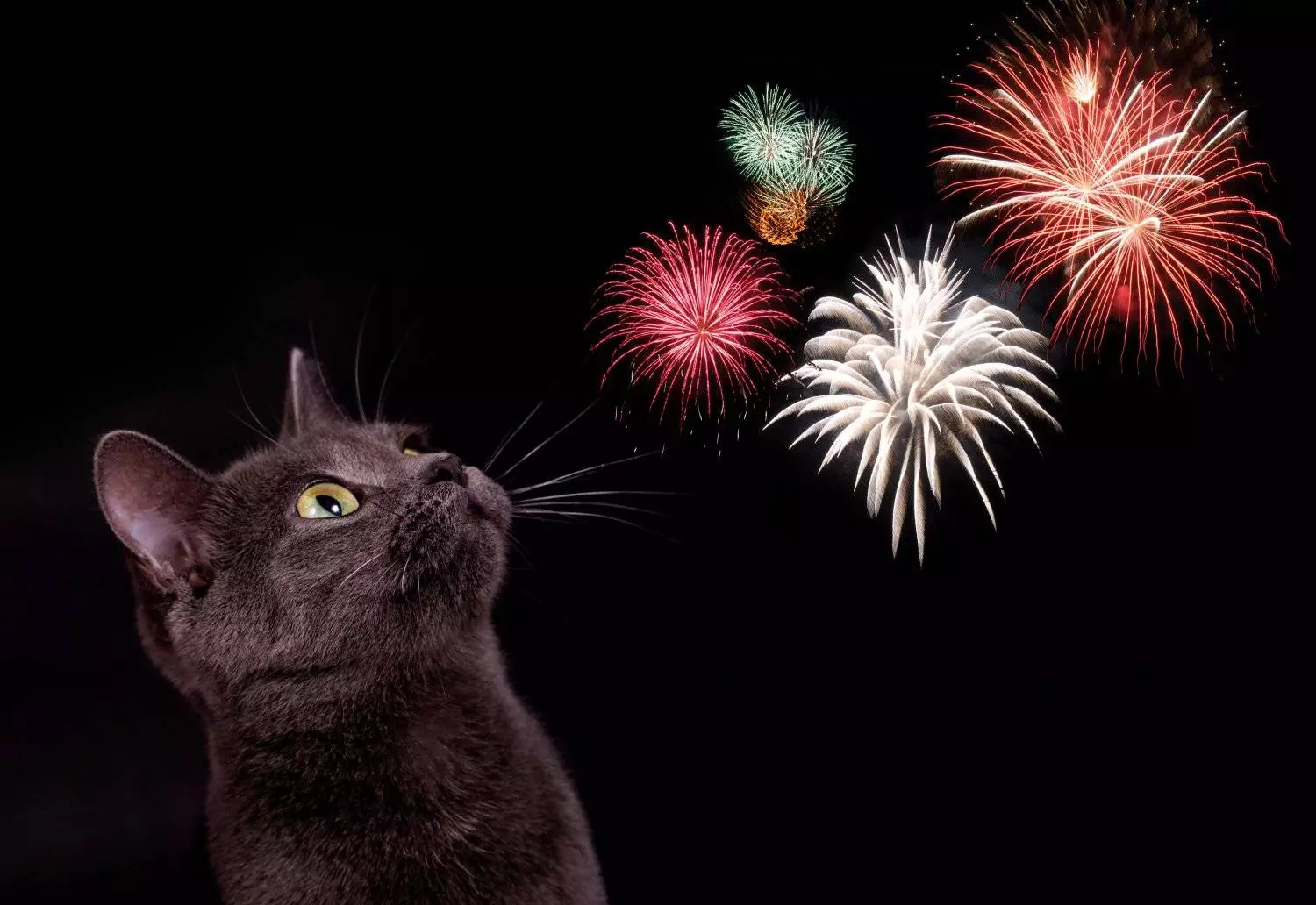As the clock ticks down towards midnight on New Year’s Eve, many of us anticipate the bright bursts of light that light up the sky. While these colorful displays herald the arrival of a new year, they often signal the onset of anxiety and fear for many pets. The British veterinary charity, PDSA, addresses this growing concern, emphasizing that countless animals experience distress during firework celebrations. This article delves into the effects of fireworks on pets, outlines coping strategies for concerned pet owners, and suggests long-term solutions to minimize fear in the future.
The PAW Report by PDSA reveals startling statistics on the prevalence of firework-related fear among pets. An estimated 4.1 million dogs and 3.3 million cats in the UK experience anxiety due to the loud noises of fireworks. This report does not stop there; it also highlights that about 16% (approximately 160,000) of rabbits are similarly affected. Such numbers underline the gravity of the situation, urging pet owners to take actionable steps to mitigate the anxiety faced by their furry companions.
Pets have heightened senses compared to humans; their acute hearing means that the sound of fireworks can be overwhelmingly loud and startling. This distress manifests in various ways—some pets may hide, trembling in fear, while others may become aggressive or attempt to flee. As pet owners navigate this challenge, understanding the underlying cause of this fear is critical.
In light of the evidence presented by the PDSA, it becomes imperative for pet owners to take proactive steps to alleviate their pets’ anxiety during the firework season. First and foremost, owners should seek advice early; consulting a veterinarian for tailored strategies can be invaluable. In some cases, medication may be necessary to help pets cope with the overwhelming sounds and sights.
Equally important is the preparation ahead of time. Scheduling evening walks for dogs during daylight and keeping outdoor pets indoors during celebrations can create a more controlled and safe environment. This shift not only protects pets but also fosters a serene atmosphere for both animals and humans. It can be comforting for pets to have a designated safe space that is equipped with cozy bedding, familiar toys, and other comforts where they can retreat when afraid.
Establishing a nurturing environment plays a significant role in minimizing stress. Owners should aim to create comfortable “dens” where pets can feel secure. For dogs and cats, a combination of pillows, blankets, and beloved toys can help buffer the noise from fireworks. For smaller pets like rabbits and guinea pigs, adding extra bedding to their cages provides a hiding spot in times of stress.
Providing reassurance is also crucial during these anxious moments. When pets seek comfort, it’s essential to respond to their needs positively—offering affection and recognizing their fear can help them feel less isolated. However, while emotional support is vital, it should be coupled with environmental adjustments to maximize comfort.
One effective way to counteract the fear associated with fireworks is through distraction. Playing calming music or sounds can help drown out the chaotic noises from outside. It’s not only about what the pets hear; the overall energy of the household can influence their response. Remaining calm and composed as an owner can significantly reduce the likelihood of panic in pets.
Additionally, pheromone diffusers are emerging as a popular tool among pet owners. These products release calming scents that pets can benefit from, facilitating a more relaxed atmosphere. Though humans cannot perceive these scents, many pets find them soothing and comforting. Incorporating these calming aids can be a game changer for anxiety-prone animals.
Once the festivities fade, pet owners need to reflect on how their pets managed and what strategies proved most effective. Keeping a log of behaviors can help in preparing for the next firework season. For instance, noting preferences—like whether a pet chose to hide or sought companionship—can inform better approaches in subsequent years.
Long-term solutions like desensitization can be immensely helpful. This process involves gradually exposing pets to the sounds of fireworks in a controlled manner to build resilience over time. Joining forces with resources such as the PDSA’s free Firework Guide can provide a wealth of information and techniques to navigate future celebrations more effectively.
While fireworks can be a source of joy for many, it is vital for pet owners to prioritize the well-being of their animals amidst the celebrations. Addressing anxiety through preparation, creating a comforting environment, and employing distraction techniques are key strategies in supporting pets during this challenging time. As we welcome each New Year, let us commit to ensuring that our four-legged friends feel safe and loved, regardless of the noise outside.


Leave a Reply